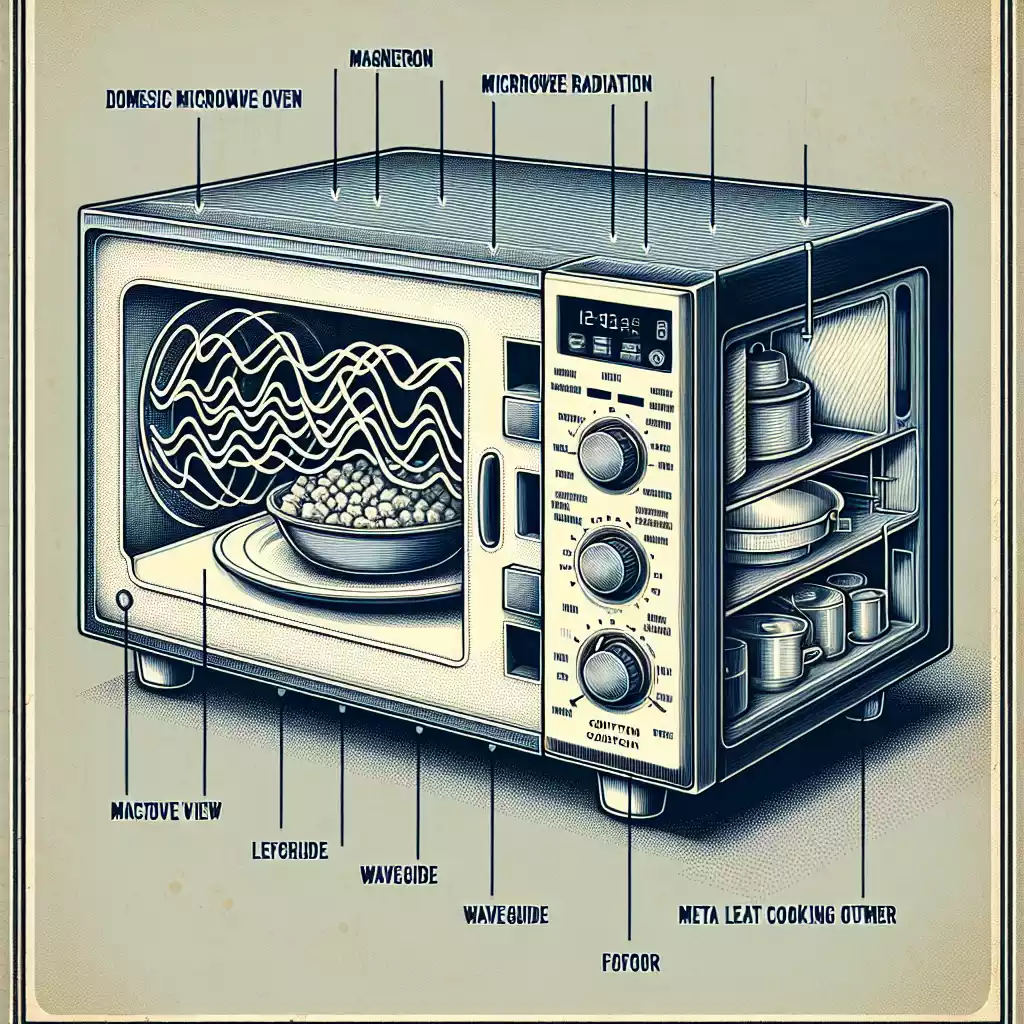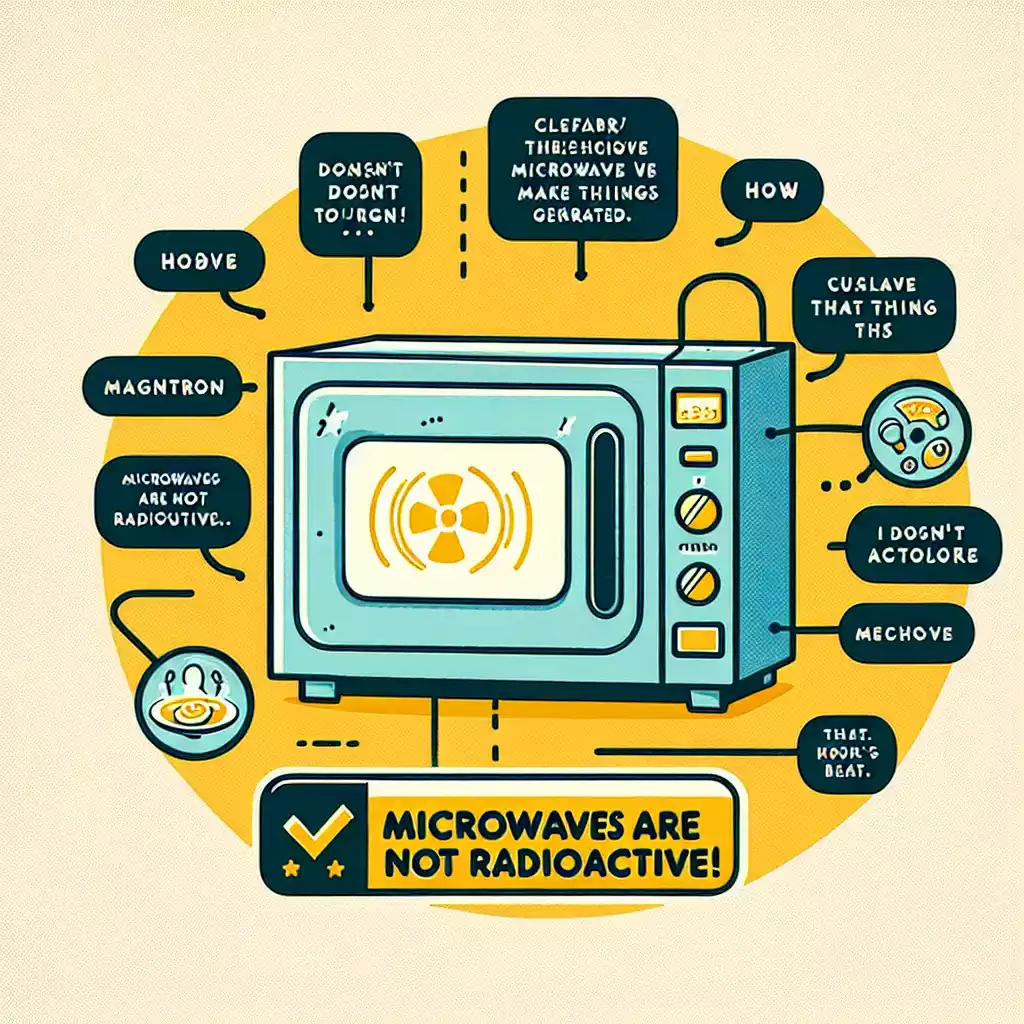Understanding Microwaves
What Are Microwaves?
Microwaves are a type of electromagnetic radiation, much like radio waves, infrared radiation, and visible light. They occupy a part of the electromagnetic spectrum with wavelengths ranging from about one meter to one millimeter, and frequencies between 300 MHz (0.3 GHz) and 300 GHz. These waves are commonly used in various applications, including communication technologies and, most famously, in microwave ovens.
How Do Microwaves Work?
Microwave ovens utilize microwaves to heat food. The microwave radiation excites water molecules within the food, causing them to vibrate and generate heat through friction. This process cooks the food from the inside out, making it a quick and efficient cooking method. The microwave oven, first introduced in the 1940s, has become a staple in modern kitchens due to its convenience.
The Science Behind Microwaves
Electromagnetic Spectrum Basics
The electromagnetic spectrum encompasses all types of electromagnetic radiation. It includes radio waves, microwaves, infrared radiation, visible light, ultraviolet light, X-rays, and gamma rays. Each type of radiation differs in wavelength and frequency, which determines its energy and potential effects on matter.
Microwave Frequency Range
Microwaves fall between radio waves and infrared radiation on the electromagnetic spectrum. Their specific frequency range is typically between 300 MHz and 300 GHz. This range allows microwaves to penetrate various materials, making them ideal for communication and cooking purposes.
Radioactivity Explained

Definition of Radioactivity
Radioactivity refers to the spontaneous emission of particles or electromagnetic radiation from the nucleus of an unstable atom. This process, known as radioactive decay, can release alpha particles, beta particles, or gamma rays. Radioactivity is a natural phenomenon observed in certain elements like uranium and radium.
Types of Radioactive Emissions
Radioactive emissions come in three primary forms:
• Alpha particles: Heavy, positively charged particles that can be stopped by a sheet of paper or human skin.
• Beta particles: Lighter, negatively charged particles that can penetrate the skin but are stopped by thicker materials like plastic or glass.
• Gamma rays: High-energy electromagnetic radiation that can penetrate most materials and requires dense shielding, such as lead, to block.
Comparing Microwaves and Radioactivity
Differences Between Microwaves and Radioactive Waves
Microwaves and radioactive waves differ fundamentally in their nature and effects. Microwaves are non-ionizing radiation, meaning they do not have enough energy to remove tightly bound electrons from atoms or molecules. In contrast, gamma rays, a form of ionizing radiation, can cause ionization and potentially damage biological tissues.
Similarities and Misconceptions
While both microwaves and gamma rays are forms of electromagnetic radiation, their energy levels and effects are vastly different. A common misconception is that all radiation is harmful, but non-ionizing radiation like microwaves is generally safe at the levels used in household appliances.
Safety of Microwave Ovens
Regulatory Standards for Microwave Ovens
Microwave ovens are subject to stringent regulatory standards to ensure safety. Organizations like the U.S. Food and Drug Administration (FDA) set limits on the amount of microwave radiation that can leak from an oven throughout its lifetime. These standards help protect users from potential exposure to harmful levels of radiation.
Common Safety Features in Microwave Ovens
Modern microwave ovens come equipped with various safety features, including:
• Interlock mechanisms: Prevent the oven from operating when the door is open.
• Shielding: Ensures that microwaves remain inside the oven.
• Timers and sensors: Prevent overheating and ensure even cooking.
Health Effects of Microwaves
Studies on Microwave Exposure
Extensive research has been conducted on the health effects of microwave exposure. Studies indicate that typical use of microwave ovens does not pose significant health risks. The primary concern is thermal injury from direct contact with hot food or containers, rather than radiation exposure.
Common Myths About Microwaves and Health
Several myths persist regarding microwaves and health, including:
• Microwaves cause cancer: There is no scientific evidence to support this claim. Microwaves are non-ionizing and do not have the energy to alter DNA.
• Microwaves destroy nutrients: Cooking in a microwave can actually preserve more nutrients compared to other methods, as it often requires shorter cooking times and less water.
Practical Tips for Microwave Use
Best Practices for Safe Microwave Use
To ensure safe and efficient use of your microwave, consider the following tips:
• Use microwave-safe containers: Avoid metal and certain plastics that can melt or release harmful chemicals.
• Stir and rotate food: This ensures even cooking and prevents cold spots where bacteria can thrive.
• Cover food: This prevents splatters and retains moisture.
Mistakes to Avoid When Using Microwaves
Common mistakes can compromise safety and cooking quality:
• Overloading the microwave: This can cause uneven cooking and potential damage to the appliance.
• Ignoring manufacturer’s instructions: Always follow the guidelines provided with your microwave.
• Using non-microwave-safe materials: Items like aluminum foil and some plastics can be hazardous.
Conclusion
Microwaves are a safe and convenient tool in modern kitchens. Understanding their nature and how they differ from radioactive waves helps dispel common myths and ensures safe usage. By following best practices and avoiding common mistakes, you can make the most of your microwave oven without compromising safety or food quality.
FAQs
FAQ 1: Can microwaves cause cancer?
No, microwaves are non-ionizing radiation and do not have the energy to alter DNA, which is necessary for cancer development.
FAQ 2: Are microwaves safe for children to use?
Yes, under supervision. Ensure children understand the basic safety rules, such as not using metal containers and waiting for food to cool before handling it.
FAQ 3: How can I tell if my microwave is leaking radiation?
A microwave leakage detector can help, but generally, if the door and seals are intact and the oven is functioning properly, leakage is minimal and within safety standards.
FAQ 4: Is it safe to stand in front of a microwave while it’s on?
Yes, modern microwaves are designed to contain radiation within the oven. Standing in front of it poses no significant risk.
FAQ 5: What materials are safe to use in a microwave?
Glass, ceramic, and certain plastics labeled “microwave-safe” are suitable. Avoid metal and non-microwave-safe plastics.
Relevant Data Table
| Type of Radiation | Wavelength Range | Frequency Range | Energy |
|---|---|---|---|
| Microwaves | 1 meter to 1 millimeter | 300 MHz to 300 GHz | Non-ionizing |
| Radio Waves | 1 kilometer to 1 meter | 3 kHz to 300 MHz | Non-ionizing |
| Gamma Rays | Less than 0.01 nanometers | Above 10 exahertz (EHz) | Ionizing |

